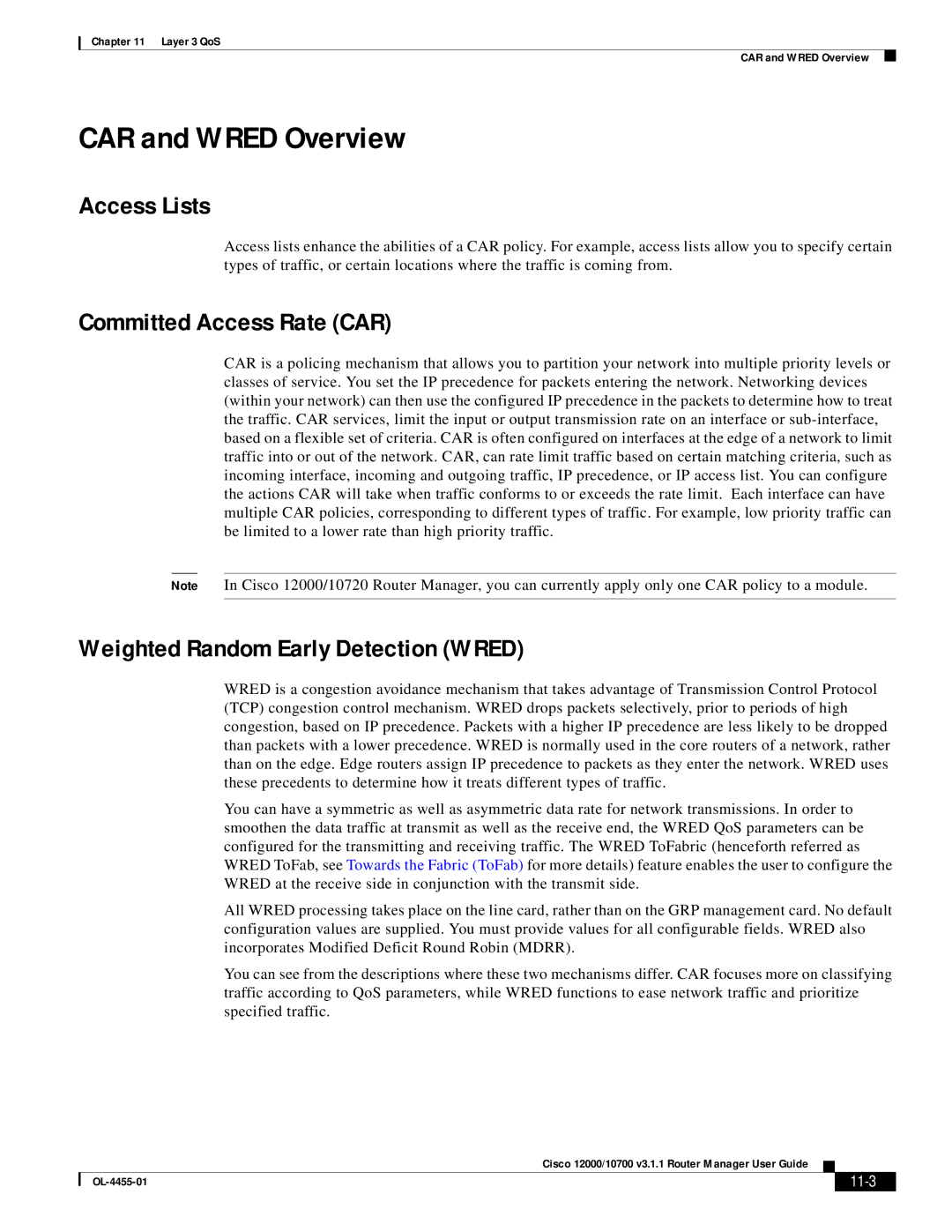
Chapter 11 Layer 3 QoS
CAR and WRED Overview
CAR and WRED Overview
Access Lists
Access lists enhance the abilities of a CAR policy. For example, access lists allow you to specify certain types of traffic, or certain locations where the traffic is coming from.
Committed Access Rate (CAR)
CAR is a policing mechanism that allows you to partition your network into multiple priority levels or classes of service. You set the IP precedence for packets entering the network. Networking devices (within your network) can then use the configured IP precedence in the packets to determine how to treat the traffic. CAR services, limit the input or output transmission rate on an interface or
Note In Cisco 12000/10720 Router Manager, you can currently apply only one CAR policy to a module.
Weighted Random Early Detection (WRED)
WRED is a congestion avoidance mechanism that takes advantage of Transmission Control Protocol (TCP) congestion control mechanism. WRED drops packets selectively, prior to periods of high congestion, based on IP precedence. Packets with a higher IP precedence are less likely to be dropped than packets with a lower precedence. WRED is normally used in the core routers of a network, rather than on the edge. Edge routers assign IP precedence to packets as they enter the network. WRED uses these precedents to determine how it treats different types of traffic.
You can have a symmetric as well as asymmetric data rate for network transmissions. In order to smoothen the data traffic at transmit as well as the receive end, the WRED QoS parameters can be configured for the transmitting and receiving traffic. The WRED ToFabric (henceforth referred as WRED ToFab, see Towards the Fabric (ToFab) for more details) feature enables the user to configure the WRED at the receive side in conjunction with the transmit side.
All WRED processing takes place on the line card, rather than on the GRP management card. No default configuration values are supplied. You must provide values for all configurable fields. WRED also incorporates Modified Deficit Round Robin (MDRR).
You can see from the descriptions where these two mechanisms differ. CAR focuses more on classifying traffic according to QoS parameters, while WRED functions to ease network traffic and prioritize specified traffic.
Cisco 12000/10700 v3.1.1 Router Manager User Guide
|
|
| |
|
|
